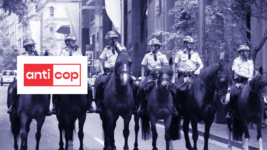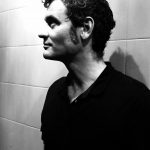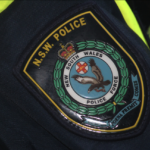The NSW Mounted Police Has Turned Two Hundred Years Old

This month marked 200 years since the NSW mounted police was first established. The occasion was marked with a mounted police parade on Gadigal land to cross through the Sydney CBD and the public lined the city streets to mark the proud occasion. However, online education source anticop is warning that the celebrations served to “whitewash the dark history of the mounted police”.
The NSW mounted police are the oldest running horse riding police force on the planet. The 7th of September 2025 marked 200 years since then NSW governor Thomas Brisbane founded what was originally a paramilitary force charged with quelling First Nations resistance out on the frontier, commencing close to 40 years into the settlement of what today is known as the state of NSW.
The NSW mounted police is located in the Bourke Street Police Complex in inner city Redfern and has been there since 1907. It comprises of 36 officers and 38 horses. Yet, in the 1830s, the mounted police were stationed across the region known as NSW, with barracks in Goulburn, Maitland and Bathurst, as well as Sydney, and at its height, it comprised of 800 officers and 900 horses.
But while the 7 September NSW government press release celebrating the police horse unit’s bicentenary noted that mounted officers had originally been charged with “tracking bushrangers and runaway convicts”, the statement failed to mention that another primary role of the horse riding police officers was to subdue the Aboriginal resistance to the colonisation of their sovereign lands.
As anticop founder Tom Raue points out, the move to celebrate the anniversary of the NSW mounted police without recognition of their role in the genocidal history of the state of NSW only serves to deny efforts to grapple with the injustices of the colonial frontier, and he further asserts that in the current setting mounted police are a redundant and dangerous relic of the colonial past.
Frontier expansion
“The 200th birthday of the mounted police is no day for celebration. The 200 year history of the mounted police is filled with massacres of Aboriginal people and attacks on peaceful protesters,” anticop’s Raue further noted. “When the mounted police proclaim they’ve ‘been riding strong every step of the way’, does that include the Waterloo Creek Massacre or trampling journalists?”
“Pushing horses into crowds is dangerous for protesters and the horses themselves,” the anticop founder continued. “Thirty five years ago, the Liberal police minister Ted Pickering said horses would no longer be used against protesters. Yasmin Catley should fulfil that promise.”
Following the 1824 Bathurst War that comprised of the British invading the lands of the Wiradjuri people to expand the colony of NSW, which was an operation that involved martial law, governor Brisbane deemed it necessary to create a mounted law enforcement division to “police” the frontier, and the UK Colonial Office approved this, with recruits taken from the British Army in Australia.
Raue notes that the Maitland “horse patrol” division under command of Lieutenant Nathaniel Lowe conducted a terror campaign against the Wonnarua people of the Hunter region in the mid-1820s, and commencing in 1837, the mounted police waged a campaign against the Gomeroi Nation, which included the perpetration of the Waterloo Creek Massacre.
In 1862, the NSW mounted police were amalgamated with the NSW border police and the NSW native police, a body that comprised of Aboriginal officers charged with policing dissident First Nations people, to form the NSW Police Force.
Renowned Australian black armband historian Henry Reynolds has described the mounted police as “the most violent organisation in Australian history”.
“The mounted police are a relic of colonialism and the brutal repression of protesters,” Raue added in a press release at the time of the anniversary. “After 200 years, it’s time to disband the mounted police.”
“Get the animals off the horses”
The NSW mounted police are no longer employed to subdue and destroy Indigenous populations on the frontier, so, these days, the horses and the police officers upon them are deployed to control crowds at protests, or otherwise their role appears to be parading around the streets of inner city Surry Hills for predominately aesthetic purposes.
The massive antilockdown protest of July 2021, the Rally for Freedom, was notable for its scenes of NSW mounted police officers running their horses into the protest crowds, with the highlight of this being demonstrator Kristian Pulkownik being captured in a photo king-hitting a NSW police horse in the face.
Indeed, mounted police walking horses into protest crowds has been ongoing since at least the 1980s.
Raue too notes that the shift toward mounted police being used as a crowd control measure at protests first came to a head in 1989, when LGBTIQA+ protesters were set upon. Archconservative politician Reverend Fred Nile had led a march of 1,000 against homosexuality, which was met by 5,000 counterprotests, of whom the NSW mounted police went on to subdue with their horses.
A May Day protest on Gadigal land in Sydney city was set upon by the NSW mounted police in 2002. Ten horses, two abreast, were walked through the crowd, creating a path between it. One non-mounted officer fell under the horses, whilst another officer fell off her horse. And the crowd was heard to chant, “Get the animals off the horses.”
Another Sydney demonstration against the World Trade Organisation in November 2002 was marred by the use of the police horses as a crowd control measure, and two of the horses that charged into the crowd trampled a then young journalist, who was working for The Australian known as Patricia Karvelas, and she was later hospitalised with injuries to the head and abdomen.
Ending mounted police at protests
Raue further notes that then NSW police minister Ted Pickering suggested to the NSW Legislative Council on 30 November 1990, that the NSW mounted police should no longer be used to control public demonstrations and the politician added that then NSW police commissioner John Avery agreed that this should be the case.
“No NSW minister for police has taken a more active interest in police horses or, as I affectionately refer to them, the cavalry,” said Pickering in late November 1990. “The commissioner and I agree that under no circumstances should the horses be used as instruments for crowd control.”
“When I was overseas, I saw some particularly horrendous sights involving horses, particularly in London. Recently an old lady was run down by a squad of cavalry. That will not happen in this state,” the then NSW police minister recalled. “Police horses will be used on a beat patrol-type program only.”
However, as Pickering failed to progress this reform, Raue is now once again raising the issue for current NSW police minister Catley to consider, as the ongoing practice of running horses into crowds at public protests is obviously a danger to demonstrators and the horses themselves, and the motivations behind police using the horses in this manner are certainly not in the public interest.







